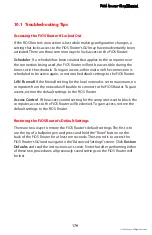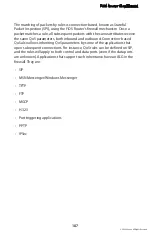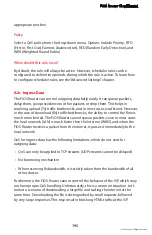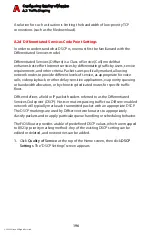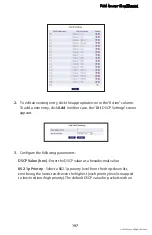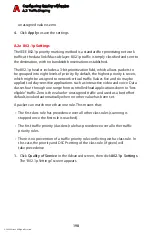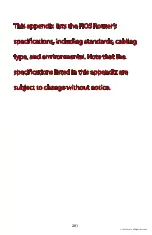
FiOS Router User Manual
193
© 2009 Verizon. All Rights Reserved.
TCP Serialization
Enable TCP Serialization from its drop-down list, either for active voice calls only
or for all traffic. The screen will refresh, adding a “Maximum Delay” text box. This
function allows the maximum allowed transmission time frame (in milliseconds)
of a single packet to be defined. Any packet requiring a longer time to be
transmitted will be fragmented to smaller sections. This avoids transmission of
large, bursty packets that can cause delay or jitter for real-time traffic, such as
VoIP.
Queue Policy
The class policy determines the traffic policy of routing packets inside the
class. Depending on the type of device, options include
Strict Policy
and
Class
Based
.
Rx Bandwidth
In the same manner, this Rx bandwidth limits the FiOS Router’s bandwidth
reception rate.
A.2b Shaping Classes
The bandwidth of a device can be divided to reserve constant portions of
bandwidth to predefined traffic types. Such a portion is known as a shaping
class. When not used by its predefined traffic type or owner (for example VoIP),
the class will be available to all other traffic. However, when needed, the entire
class is reserved solely for its owner. Also, the maximum bandwidth that a class
uses can be limited, even if the entire bandwidth is available.
When a shaping class is defined for a specific traffic type, two shaping classes
are created. The second class is the “Default Class”, which is responsible for all
the packets that do not match the defined shaping class, or any other classes
that might be defined on the device. This can be viewed in the “Class Statistics”

